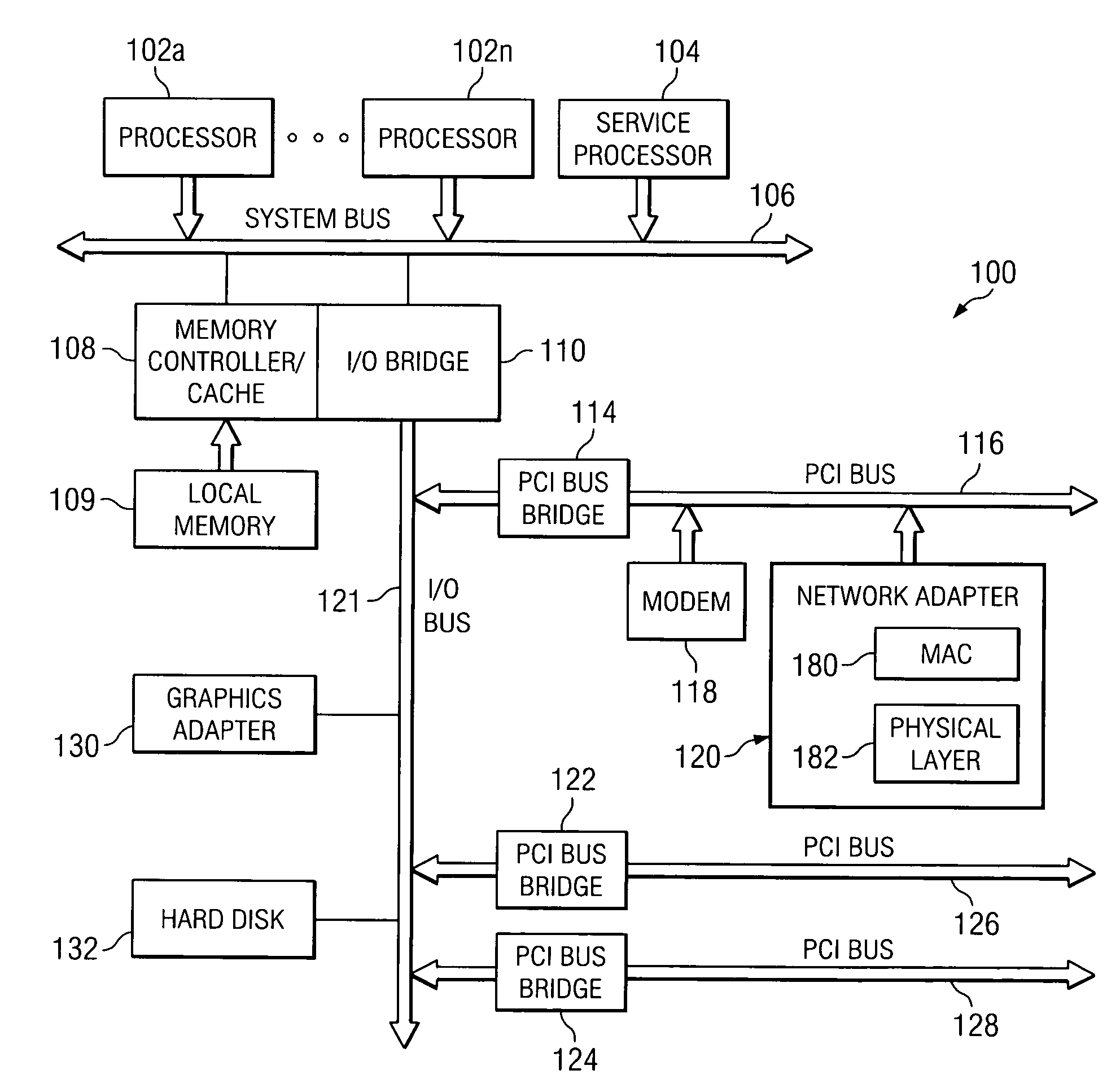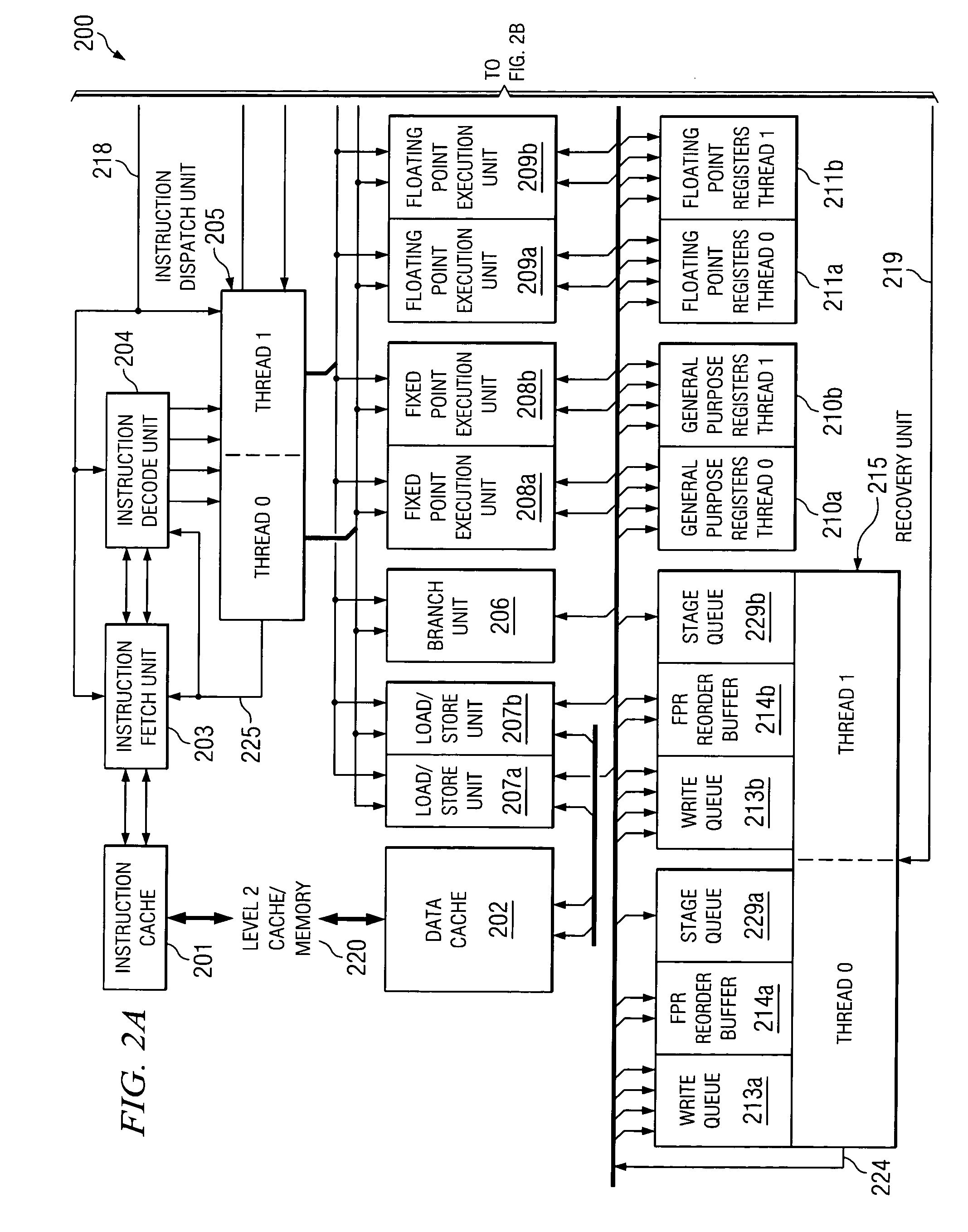Method for checkpointing instruction groups with out-of-order floating point instructions in a multi-threaded processor
a multi-threaded processor and instruction group technology, applied in error detection/correction, digital computers, instruments, etc., can solve problems such as error detection, inability to detect which particular bit in a data item is in error, and the checking logic (e.g. parity code predictors) was as complex as the circuit components (
- Summary
- Abstract
- Description
- Claims
- Application Information
AI Technical Summary
Benefits of technology
Problems solved by technology
Method used
Image
Examples
Embodiment Construction
[0022] The present invention provides a method and apparatus for checkpointing instruction groups with out-of-order floating point instructions in a multi-threaded processor. The present invention provides a processor that implements an instruction checkpoint retry mechanism to recover from soft errors in logic. The present invention uses some of the same fundamental concepts as existing processors, where a recovery unit (Runit) maintains an Error Correcting Code (ECC) hardened checkpointed copy of all architected registers which can be restored in case of an error, with processing resumed from the restored checkpoint. However, there are shortcomings of existing Runit implementations which are solved by this invention.
[0023] The present invention provides support for prior art limitations such as fixed point unit (FXU), and floating point unit (FPU) or vector multimedia extension (VMX) operations that are dispatched in the same instruction group, out-of-order FPU and VMX operations...
PUM
 Login to View More
Login to View More Abstract
Description
Claims
Application Information
 Login to View More
Login to View More - R&D
- Intellectual Property
- Life Sciences
- Materials
- Tech Scout
- Unparalleled Data Quality
- Higher Quality Content
- 60% Fewer Hallucinations
Browse by: Latest US Patents, China's latest patents, Technical Efficacy Thesaurus, Application Domain, Technology Topic, Popular Technical Reports.
© 2025 PatSnap. All rights reserved.Legal|Privacy policy|Modern Slavery Act Transparency Statement|Sitemap|About US| Contact US: help@patsnap.com



